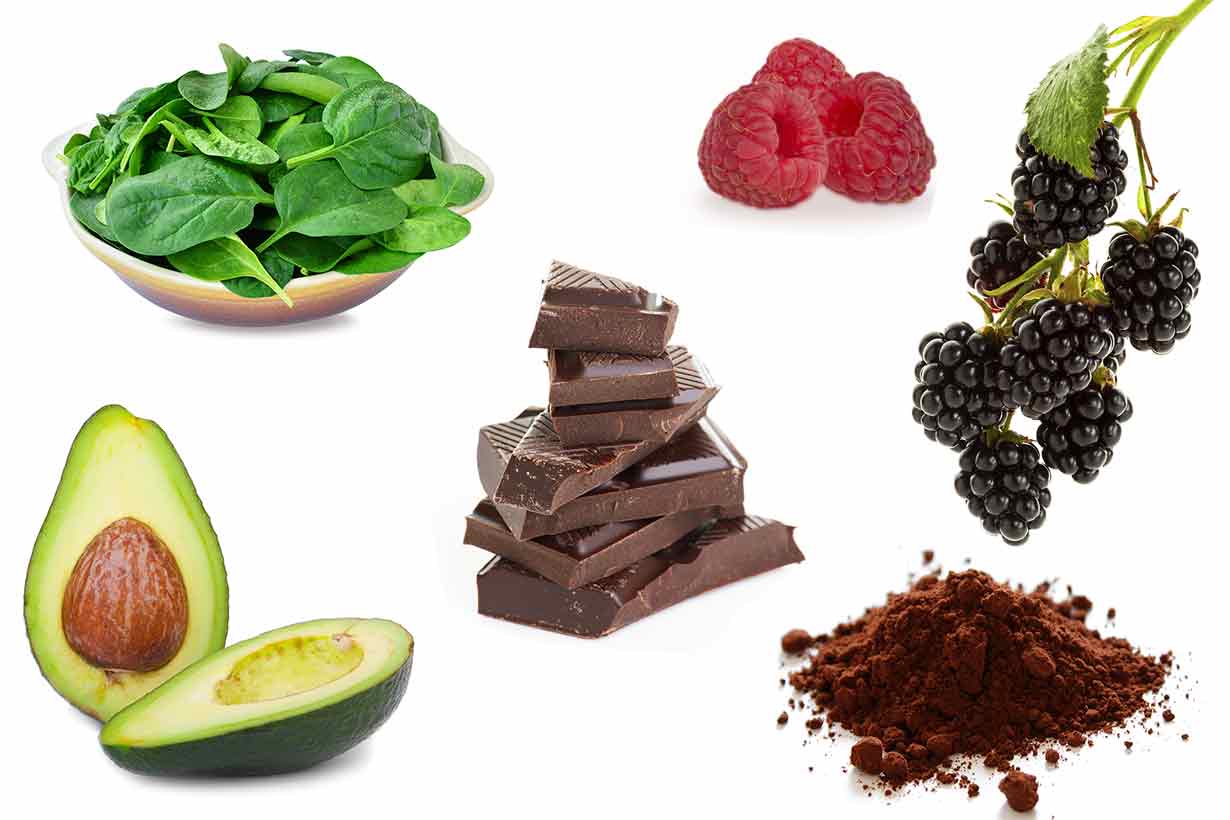20 of the Best Low-Carb Fruit Options
Well-formulated low-carb diets can be an effective dietary choice for some people.
However, how does fruit fit into a typical low-carb diet?
The truth is that, as with any food, all fruits can fit into a low-carb diet while within the daily carbohydrate intake goal.
That said, fruits with a lower-carbohydrate content are better suited for meeting stricter carbohydrate targets.
For this purpose, this guide presents twenty of the best low-carb fruit options.

Table of contents
Data and Sources
Data for total carbohydrates, fiber, calories, and ‘net carbs’ per 100 grams and per serving are available for each fruit.
‘Net carbs’ is the remaining carbohydrate content in food after deducting fiber from total carbohydrates.
Some people prefer to use ‘net carbs’ rather than total carbohydrates, as not all carbohydrates have the same effect on blood sugar. In other words, fiber does not break down into glucose like other carbohydrates do (1).
The source of all nutritional data in this guide is the USDA’s FoodData Central database.
1) Apricot
| Name | Per 100 Grams | Per 35-gram Apricot |
|---|---|---|
| Total carbohydrates | 11.1 g | 3.88 g |
| Fiber | 2.0 g | 0.7 g |
| Net carbs | 9.1 g | 3.18 g |
| Calories | 48 kcal | 17 kcal |
Apricots are one of the lowest-carb fruits, with only 3.88 grams of total carbohydrate per 35-gram apricot (2).
2) Avocado
| Name | Per 100 Grams | Per 201-gram Avocado |
|---|---|---|
| Total carbohydrates | 8.53 g | 17.1 g |
| Fiber | 6.7 g | 13.5 g |
| Net carbs | 1.83 g | 3.6 g |
| Calories | 160 kcal | 322 kcal |
Avocados are a unique fruit in that they contain more fat than carbohydrates.
Additionally, the vast majority of the carbohydrates in avocados are from fiber.
A 201-gram California avocado contains 17.1 grams of carbohydrates, of which 13.5 grams are fiber (3).
Another benefit of avocados is that they’re an excellent low-carb-friendly source of vitamins and minerals.
3) Blackberries
| Name | Per 100 Grams | Per 150g Cup |
|---|---|---|
| Total carbohydrates | 9.61 g | 14.4 g |
| Fiber | 5.3 g | 7.95 g |
| Net carbs | 4.31 g | 6.45 g |
| Calories | 43 kcal | 65 kcal |
Blackberries are a popular fruit, high in fiber, and relatively low-carb.
A 150-gram cup serving of blackberries provides only 14.4 grams of carbohydrates, of which most is fiber (4).
4) Blueberries
| Name | Per 100 Grams | Per 150g Cup |
|---|---|---|
| Total carbohydrates | 14.5 g | 21.8 g |
| Fiber | 2.4 g | 3.6 g |
| Net carbs | 12.1 g | 18.2 g |
| Calories | 57 kcal | 86 kcal |
Although blueberries are higher in carbohydrates than other berries, they are still relatively low-carb.
A 150-gram cup serving of blueberries contains 21.8 grams of carbohydrates, of which 3.6 grams are fiber (5).
5) Boysenberries (frozen weight)
| Name | Per 100 Grams | Per 132g Cup |
|---|---|---|
| Total carbohydrates | 12.2 g | 16.1 g |
| Fiber | 5.3 g | 7.0 g |
| Net carbs | 6.9 g | 9.1 g |
| Calories | 50 kcal | 66 kcal |
Depending on location, it can be harder to find boysenberries than more common berries like strawberries and blueberries.
However, these berries are a great source of nutritional value and have a low-carbohydrate content too.
A 132-gram cup of frozen boysenberries contains 16.1 grams of carbohydrates, of which 7 grams are fiber (6).
6) Cantaloupe
| Name | Per 100 Grams | Per 70-gram Slice |
|---|---|---|
| Total carbohydrates | 8.16 g | 5.71 g |
| Fiber | 0.8 g | 0.56 g |
| Net carbs | 7.36 g | 5.15 g |
| Calories | 38 kcal | 27 kcal |
Cantaloupe, also known as rockmelon and sweet melon, is a sweet and juicy melon variety.
Despite its sweetness, cantaloupe has a relatively low carbohydrate content.
A 70-gram medium-sized slice of cantaloupe provides only 5.71 grams of carbohydrates (7).
7) Coconut
| Name | Per 100 Grams | Per ounce (28g) serving |
|---|---|---|
| Total carbohydrates | 15.2 g | 4.26 g |
| Fiber | 9.0 g | 2.52 g |
| Net carbs | 6.2 g | 1.74 g |
| Calories | 354 kcal | 99 kcal |
Despite being mistaken for a nut, coconut is a fruit that supplies a mix of carbohydrates and fats.
An ounce (28g) serving of fresh coconut provides 4.26 grams of carbohydrates, with 2.52 grams from fiber (8).
8) Cranberries
| Name | Per 100 Grams | Per 100g Cup |
|---|---|---|
| Total carbohydrates | 12.0 g | 12.0 g |
| Fiber | 3.6 g | 3.6 g |
| Net carbs | 8.4 g | 8.4 g |
| Calories | 46 kcal | 46 kcal |
Cranberries are a somewhat tart-tasting berry and one of the lowest-carb fruits.
However, it is essential to note that dried cranberries often contain added sugar.
A cup serving of fresh cranberries weighs approximately 100 grams and contains 12 grams of carbohydrates (9).
9) Gooseberries
| Name | Per 100 Grams | Per 150g Cup |
|---|---|---|
| Total carbohydrates | 10.2 g | 15.3 g |
| Fiber | 4.3 g | 6.45 g |
| Net carbs | 5.9 g | 8.85 g |
| Calories | 44 kcal | 66 kcal |
Gooseberries have a similar size and appearance to grapes.
However, they have a much different nutritional profile, including a lower carbohydrate content.
A 150-gram cup of gooseberries provides 15.3 grams of carbohydrates, which includes 6.45 grams of fiber (10).
10) Grapefruit
| Name | Per 100 Grams | Per 1/2 Grapefruit |
|---|---|---|
| Total carbohydrates | 10.7 g | 16.5 g |
| Fiber | 1.6 g | 2.46 g |
| Net carbs | 9.1 g | 14.04 g |
| Calories | 42 kcal | 65 kcal |
Grapefruit is a semi-sweet citrus fruit that is a bit lower in carbs than oranges.
Half (154 grams) of a regular-sized grapefruit has a carbohydrate content of 16.5 grams, including 2.46 grams of fiber (11).
11) Lemon
| Name | Per 100 Grams | Per 65-gram Lemon |
|---|---|---|
| Total carbohydrates | 9.32 g | 6.06 g |
| Fiber | 2.8 g | 1.82 g |
| Net carbs | 6.52 g | 4.24 g |
| Calories | 29 kcal | 19 kcal |
Lemon is a sour-tasting citrus fruit often used in recipes and drinks.
It is among the lowest carbohydrate fruits and provides just 6.06 grams per lemon, 1.82 grams of which are fiber (12).
12) Lime
| Name | Per 100 Grams | Per 67-gram Lime |
|---|---|---|
| Total carbohydrates | 10.5 g | 7.04 g |
| Fiber | 2.8 g | 1.88 g |
| Net carbs | 7.7 g | 5.16 g |
| Calories | 30 kcal | 20 kcal |
Lime has a similar nutritional profile to lemon and contains a low amount of carbohydrates.
Per 67-gram lime, there are 7.04 grams of carbohydrates, which includes 1.88 grams of fiber (13).
13) Lychee
| Name | Per 100 Grams | Per 10-gram Lychee |
|---|---|---|
| Total carbohydrates | 16.5 g | 1.65 g |
| Fiber | 1.3 g | 0.13 g |
| Net carbs | 15.2 g | 1.52 g |
| Calories | 66 kcal | 7 kcal |
Lychees are not among the lowest-carb fruits per 100 grams.
However, the fruit is so small that one lychee contains minimal carbohydrate levels.
A single lychee fruit contains 1.65 grams of carbohydrates, of which 0.13 grams are fiber (14).
14) Mulberries
| Name | Per 100 Grams | Per 140g Cup |
|---|---|---|
| Total carbohydrates | 9.8 g | 13.7 g |
| Fiber | 1.7 g | 2.38 g |
| Net carbs | 8.1 g | 11.32 g |
| Calories | 43 kcal | 60 kcal |
Mulberries can be harder to find than other berries, but they are another low-carb-friendly food.
A 140-gram cup serving of mulberries provides 13.7 grams of carbohydrates, which includes 2.38 grams of fiber (15).
15) Olives
| Name | Per 100 Grams | Per 4-gram Olive |
|---|---|---|
| Total carbohydrates | 3.84 g | 0.15 g |
| Fiber | 3.3 g | 0.13 g |
| Net carbs | 0.54 g | 0.02 g |
| Calories | 145 kcal | 6 kcal |
It is common for people to think olives are a vegetable (see some low-carb vegetables here).
However, olives are botanically a fruit.
Since they are primarily a source of fat, olives contain minimal carbohydrates.
Per olive, there are only 0.15 grams of carbohydrates, the vast majority of which (0.13 grams) is fiber (16).
16) Prickly Pear
| Name | Per 100 Grams | Per 103-gram Prickly Pear |
|---|---|---|
| Total carbohydrates | 9.57 g | 9.86 g |
| Fiber | 3.6 g | 3.71 g |
| Net carbs | 5.97 g | 6.15 g |
| Calories | 41 kcal | 42 kcal |
Prickly pear, also known as cactus fruit, is a nutrient-rich fruit with a unique appearance.
It also has a low carbohydrate content of 9.86 grams per fruit, with 3.71 grams from fiber (17).
17) Raspberries
| Name | Per 100 Grams | Per 150g Cup |
|---|---|---|
| Total carbohydrates | 11.9 g | 17.8 g |
| Fiber | 6.5 g | 9.75 g |
| Net carbs | 5.4 g | 8.05 g |
| Calories | 52 kcal | 78 kcal |
More than half of the carbohydrates in raspberries come from fiber, making them a good fit for lower-carb diets.
A 150-gram cup of raspberries supplies 17.8 grams of carbohydrates, 9.75 grams of which come from fiber (18).
18) Starfruit
| Name | Per 100 Grams | Per 90-gram Starfruit |
|---|---|---|
| Total carbohydrates | 6.73 g | 6.06 g |
| Fiber | 2.8 g | 2.52 g |
| Net carbs | 4.93 g | 3.54 g |
| Calories | 31 kcal | 28 kcal |
For a sweet-tasting tropical fruit, the carbohydrate content of starfruit is surprisingly low.
A typical 90-gram starfruit contains just 6.06 grams of carbohydrates, including 2.52 grams of fiber (19).
19) Strawberries
| Name | Per 100 Grams | Per 150g Cup |
|---|---|---|
| Total carbohydrates | 7.63 g | 11.4 g |
| Fiber | 1.8 g | 2.7 g |
| Net carbs | 5.83 g | 8.7 g |
| Calories | 35 kcal | 53 kcal |
Strawberries are one of the most popular fruits in the world and one of the lowest-carb fruits too.
A 150-gram cup serving of strawberries has 11.4 grams of carbohydrates, with 2.7 grams from fiber (20).
20) Watermelon
| Name | Per 100 Grams | Per 218-gram Slice |
|---|---|---|
| Total carbohydrates | 7.55 g | 16.5 g |
| Fiber | 0.4 g | 0.87 g |
| Net carbs | 7.15 g | 15.63 g |
| Calories | 30 kcal | 65 kcal |
Watermelon is a refreshing and juicy fruit that contains over 91% water by weight (21).
For this reason, the fruit is relatively low in overall calories and carbohydrates.
A 218-gram slice of watermelon provides 16.5 grams of carbohydrates (21).
Final Thoughts
Individuals following a low-carb diet often track total carbohydrate intake, particularly when the diet is aimed at blood sugar control.
All fruits can technically fit into a low-carb diet if total carbohydrate intake comes within an individual’s daily target.
However, the fruits in this guide are some of the lowest-carb options and will use up less of the daily carbohydrate quota.




